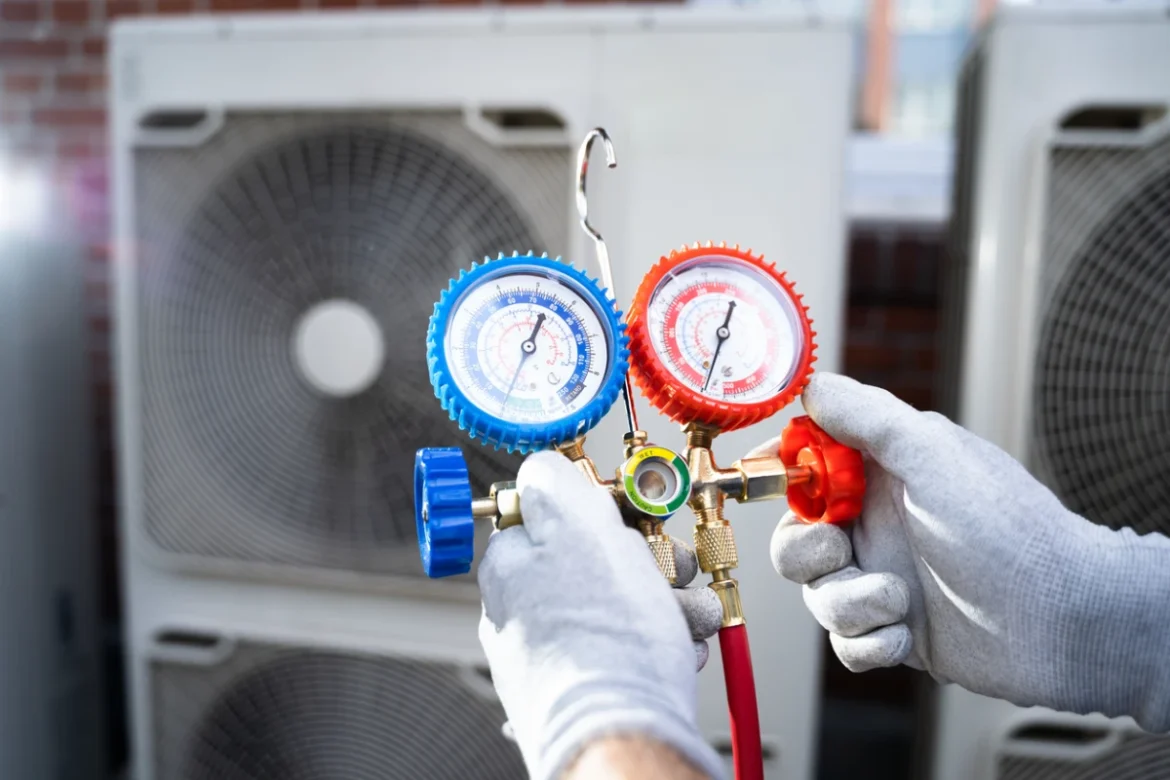Simply put, determining what refrigerant is in your AC means finding out what type of cooling chemical is inside your air conditioning system. Think of refrigerant like the “blood” of your AC – it’s the special liquid that moves heat from inside your house to outside, keeping you cool. Just like you need to know what type of oil goes in your car, you need to know what type of refrigerant goes in your AC.
There are different types of refrigerants, like R-22, R-410A, and others, and each one works differently. Using the wrong type can damage your AC or make it work poorly, so knowing which one you have is very important.
Why is it Important to Know Your Refrigerant Type?
Knowing your refrigerant type matters for several big reasons:
Safety first – Different refrigerants work at different pressures. Some work at much higher pressure than others, and using the wrong tools or adding the wrong type can be dangerous.
Money savings – If you need to add more refrigerant or fix a leak, your repair person needs to know exactly what type you have. Using the wrong type means starting over and costs much more money.
Proper repairs – Each refrigerant type needs different tools, gauges, and handling methods. Your AC repair person must know which type you have to fix it correctly.
Environmental protection – Some older refrigerants harm the environment more than newer ones. Knowing your type helps ensure proper disposal and replacement when needed.
How Do You Find Out What Refrigerant You Have?
There are several simple ways to figure out what refrigerant is in your AC system:
Method 1: Check the Equipment Label
The easiest way is to look at the data plate or sticker on your AC unit. This metal plate is usually located on the outdoor unit (the big box outside your house) or sometimes on the indoor unit. Look for words like “Refrigerant Type” or just the letter “R” followed by numbers like “R-22” or “R-410A.”
Method 2: Look at the Compressor Tag
If the main label is missing or too faded to read, check for a tag on the side of the compressor. The compressor is the round or oval-shaped part inside the outdoor unit that makes humming sounds.
Method 3: Check the Expansion Valve
Look at the expansion valve, which controls refrigerant flow. This small device usually has markings that show what refrigerant type it’s designed for. An R-22 valve looks different from an R-410A valve.
Method 4: Use Pressure and Temperature Method
This method requires some tools but works when labels are missing. You measure the pressure and temperature of the refrigerant when the system is off and compare it to a chart.
What’s the Difference Between Different Refrigerant Types?

R-22 (Freon) – This is the older type that was used for many years. It works at lower pressures but harms the ozone layer, so it’s being phased out.
R-410A – This is the newer, more common type in modern AC systems. It works at much higher pressures but is better for the environment.
Retrofit Refrigerants – These are newer refrigerants designed to replace R-22 in older systems. They have names like MO-99, R-438A, or NU-22B.
R-407C and others – These are other modern refrigerants used in different types of systems.
Where Can You Find This Information?

The information you need is usually in these places on your AC system:
Outdoor unit data plate – Usually on the back or side of the outdoor unit, this metal plate has all the important information about your AC.
Indoor unit label – Sometimes there’s also a sticker on the indoor air handler unit.
Service valves – The connections where repair people attach their gauges sometimes have markings.
Owner’s manual – If you still have it, your AC’s manual will list the refrigerant type.
Previous service records – If you have paperwork from past repairs, it might list the refrigerant type.
How Do Professionals Test for Refrigerant Type?

When labels are missing or unclear, HVAC professionals use special tools and methods:
Pressure-Temperature Charts – They attach gauges to measure pressure, then use a thermometer to check temperature. By comparing these numbers to a chart, they can identify the refrigerant type.
Digital Manifolds – Modern electronic gauges can help identify refrigerant types by comparing pressure and temperature readings automatically.
Refrigerant Analyzers – These expensive machines can precisely identify refrigerant types, but most homeowners don’t need them.
When Should You Call a Professional?
You should call an HVAC professional when:
- All labels are missing or too damaged to read
- You’re not comfortable working around AC equipment
- You need to add refrigerant or fix leaks
- You suspect the wrong refrigerant type was used
- Your system isn’t cooling properly
Never try to add refrigerant yourself – This requires special training, tools, and licensing. Adding the wrong type or amount can damage your system or be dangerous.
What If You Have the Wrong Refrigerant?
If someone put the wrong refrigerant in your system, you’ll need professional help to fix it. The technician will need to:
- Remove all the wrong refrigerant
- Clean the system completely
- Check for any damage
- Add the correct refrigerant type
- Test the system to make sure it works properly
This process is expensive but necessary to prevent further damage to your AC system.
Can You Mix Different Refrigerant Types?
Never mix different refrigerant types – This can seriously damage your AC system and create safety hazards. Each type has different properties, and mixing them creates problems like:
- Poor cooling performance
- Higher operating pressures
- Compressor damage
- System breakdowns
- Safety risks
If you suspect mixed refrigerants, call a professional immediately to fix the problem.
Summary
Determining what refrigerant is in your AC is like checking what type of fuel your car needs – it’s essential information for proper maintenance and repairs. The easiest way is to check the data plate on your outdoor AC unit, which should clearly show the refrigerant type like R-22 or R-410A. If labels are missing, professionals can use pressure and temperature measurements to identify the type. Never guess or mix refrigerant types, as this can damage your system and create safety hazards. When in doubt, always call a licensed HVAC professional who has the proper tools and training to safely identify and handle your specific refrigerant type.
Stay informed with the latest news, in-depth analysis, entertainment, technology, sports and exclusive insights like iPhone 17, Xavier Worthy, Anisimova, Matt Rife, and Brock Lesnar. Visit Buzz Explained for more top stories, updates, and expert coverage from all around the world!



